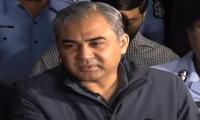KARACHI: Through amendments in the Supreme Court (Practice and Procedure) Act, 2023, parliament has reinforced its authority over the Supreme Court’s constitutional bench framework, adjusting several key provisions. The amendments introduce constitutional benches directly into Supreme Court procedures, transferring bench management to a designated committee and empowering the newly constituted body to determine whether cases warrant a constitutional or standard judicial hearing. This restructuring, effective retroactively from the 26th Amendment, centralises case assignment processes and appeals within the constitutional benches, cementing a new operational order within the court.
On Monday, the National Assembly and Senate passed six key bills that address judicial reforms and changes to military leadership terms. Specifically, the amendments to the Supreme Court (Practice and Procedure) Act, 2023 incorporate the concept of constitutional benches within the framework of the Supreme Court of Pakistan.
The first major change is to the preamble. Previously, the Practice and Procedure Act cited Articles 10A, 25, and 175(2), emphasising that non-discriminatory treatment and the right to appeal are universal fundamental principles under both these Articles and Islamic principles. Now, it’s been revised to reflect that, under Articles 191 and 191A, parliament has the authority to set practices and procedures for the Supreme Court and its constitutional benches.
Barrister Ali Tahir notes that “A notable feature of the amendments act is that it’s been made effective from the date of the 26th Amendment, apparently aiming to negate any retrospective rulings made in the interim.”
Section 4 of the amendment act also establishes that cases not assigned to a constitutional bench will be managed by a committee set up under the Practice and Procedure Act, which includes the chief justice of Pakistan, the next senior-most Supreme Court judge, and the senior-most judge on the constitutional bench. Another key provision is that if any judge declines to serve on the Practice and Procedure committee, the chief justice has the authority to appoint a replacement.
Supreme Advocate Basil Nabi Malik notes the change in the Practice and Procedure committee thus: “Basically, they have reconstituted the committee that fixes benches and cases to include the CJP, the next senior-most SC judge, and the head of the constitution bench. That effectively means CJP Yahya Afridi, Justice Mansoor Ali Shah, and whoever will be the head of the constitutional bench. If the CJP or Justice Shah are selected for the constitutional bench, then the next most senior judge will take their place in the committee.”
According to Malik, that to him indicates that “they will probably start with Justice Aminuddin onwards” when deciding whom to include in the constitutional bench. In any case, he feels that increasing the judges’ numbers means “they’ll have more choices for the constitutional bench.”
Talking to Shahzeb Khanzada on Geo on Monday night, Information Minister Attaullah Tarar clarified that the legislation regarding the Practice and Procedure Act was “not person-specific”. When asked whether it was true that the change in the Practice and Procedure committee would effectively ensure that Justice Muneeb Akhtar will not be part of the committee, Tarar denied that, adding that “When the constitutional bench was formed, we felt it was important to have the head of the constitutional bench there in the committee. No names have been used in this; it is not related to one specific person -- this is not why we made the amendment”.
Barrister Ali Tahir further explains the other modalities of the amendment act: “Following the addition of Article 191A, clause four states that a committee will also oversee the formation of constitutional benches. This committee, consisting of the three most senior judges on the constitutional bench, will determine which bench hears each case”.
Under the new amendment, it is this committee, established under Article 191A, that will decide if a matter should be addressed by a constitutional bench or a regular Supreme Court bench, issuing its decision through a speaking order. If the committee determines a matter requires constitutional interpretation, it will be referred to a constitutional bench; otherwise, it will go to the Practice and Procedure Act committee -- which in itself has been revamped as described above.
Under the Monday amendments, the original sections three and four, which required constitutional interpretation by a minimum five-member bench and that each case initially go through the Practice and Procedure committee have been removed. Section 5 has also been revised, specifying that appeals may now only be made to the constitutional bench, which has exclusive jurisdiction under Article 184(3). Appeals must be filed within 30 days, and appeals filed before the 26th Amendment will also be transferred to the constitutional benches.
Regarding bench composition and formation, it is now mandated that cases presented to the Supreme Court be heard on a first-come, first-served basis. All Supreme Court hearings will also be recorded, and certified transcripts will be available for use in other courts at a fee.
Essentially, says Barrister Ali Tahir, “all the good work done under the original Practice and Procedure Act has now been reserved [through this amendment]. Now the constitutional bench -- which I would call a constitutional division -- has been empowered.”
ICSID Tribunal decides to proceed with adjudication on quantum of amounts owed to Bayindir by Pakistan
Establishment Division issues official notification of orders
Food Department of Azad Kashmir expressed fear of public protest over poor quality of flour
Four-week domain-specific programme will start from November 25 at the National Police Academy, Islamabad
Pakistan is ready to collaborate with private sector and international partners to develop carbon markets, says Romina
Data shows that electricity purchases by country’s power distribution companies dropped by 10.85%







